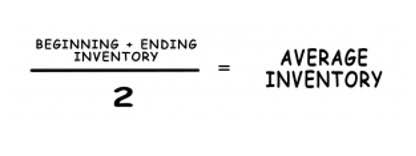
When a company makes long-term investments in securities, acquires property, equipment, vehicles, or it expands its facilities, etc., it is assumed to be using or reducing the company’s cash and cash equivalents. As a result, these investments and capital expenditures are reported as negative amounts in the cash flows from investing activities section of the SCF. When a medium other than cash is used to acquire an asset, we call it a non-cash investing activity. When we prepare a statement of cash flows, we are concerned only with cash transactions. The significant non-cash investing activities are, however, disclosed in the footnotes under the caption “non-cash investing and financing activities”.
- Therefore, the cash received from the sale of these long-term assets will be reported as positive amounts in the cash flows from investing activities section of the SCF.
- For information pertaining to the registration status of 11 Financial, please contact the state securities regulators for those states in which 11 Financial maintains a registration filing.
- The sum of all three results in the net cash flow of the company for the year.
- However, if GAAPs are to be followed, the cash received for dividends should be classified as operating cash inflow.
- T-Shirt Pros’ statement of cash flows, as it was prepared by the company accountants, reported the following for the period, and had no other capital expenditures.
- Cash flows related to changes in equity can be identified on the Statement of Stockholder’s Equity, and cash flows related to long-term liabilities can be identified by changes in long-term liabilities on the balance sheet.
- Negative Cash Flow from investing activities means that a company is investing in capital assets.
2 Differentiate between Operating, Investing, and Financing Activities
Cash flow from investing activities is reported on the cash flow statement. In accounting, investment activities refer to the purchase and sale of long-term assets and other business investments, within a specific reporting period. The results of a company’s reported investing activities give insights into its total investment gains and losses during a defined period.
- The purchase or sale of a fixed asset like property, plant, or equipment would be an investing activity.
- The income statement reports the revenue and expenditure of a company during a specific period, while the balance sheet reports the assets, liabilities, and capital.
- For the year, the company spent $30 billion on capital expenditures, of which the majority were fixed assets.
- Cash flows from investing activities provide an account of cash used in the purchase of non-current assets, also known as long-term assets, that will deliver value in the future.
- They can give you insights into how a business might grow in future and earn more revenue.
How Do You Calculate Cash Flow From Investing Activities?
- When a company makes long-term investments in securities, acquires property, equipment, vehicles, or it expands its facilities, etc., it is assumed to be using or reducing the company’s cash and cash equivalents.
- Cash flow from investing activities includes any inflows or outflows of cash from a company’s long-term investments.
- Some examples of investing cash flows are payments for the purchase of land, buildings, equipment, and other investment assets and cash receipts from the sale of land, buildings, equipment, and other investment assets.
- Any changes in the cash position of a company that involves assets, investments, or equipment would be listed under investing activities.
- An increase in capital expenditures means the company is investing in future operations.
It is a non-cash expense and is added back to the net income in the operating activities section under the indirect method. Like depreciation, amortization has nothing to do with the investing activities section. Cash flow from investing activities includes any inflows or outflows of cash from a company’s long-term investments.
Cash Flow From Financing Activities
The receipt of a cash dividend of $1,200 may be classified as either operating or investing cash inflow if financial statements are prepared in accordance with IFRSs. However, if GAAPs are to be followed, the cash received for dividends should be classified as operating cash inflow. T-Shirt Pros’ statement of cash flows, as it was https://www.bookstime.com/articles/contribution-margin-income-statement prepared by the company accountants, reported the following for the period, and had no other capital expenditures. As the statement of cash flows indicates, Walmart made a significant capital expenditure in 2019 since it has a net cash outflow of $24,036 million in investing activities. Cash flow from financing activities includes cash transactions that increase or decrease a company’s equity and/or liabilities. The net cash used in investing activities was calculated by subtracting the positive cash flow of $1,395 million from the negative cash flow of $25,431 million.

Classification of Cash Flows Makes a Difference
Cash flow from investing activities is a major component of the cash flow statement. The cash flow statement is one of the four annual financial statements prepared by companies at the end of the year. Negative cash flow from investing activities does not always indicate https://www.facebook.com/BooksTimeInc/ poor financial health. It is often a sign that the company is investing in assets, research, or other long-term development activities that are important to the health and continued operations of the company. Investing activities include purchases of physical assets, investments in securities, or the sale of securities or assets.
Finance Strategists has an advertising relationship with some of the companies included on this website. We may earn a commission when you click on a link or make a purchase through the links on our site. All of our content is based on objective analysis, and the opinions are our own. Textbook content produced by OpenStax is licensed under a Creative Commons Attribution-NonCommercial-ShareAlike License . For the past 52 years, Harold Averkamp (CPA, MBA) hasworked as an accounting supervisor, manager, consultant, university instructor, and innovator in teaching accounting online. For the past 52 years, Harold Averkamp (CPA, MBA) has worked as an accounting supervisor, manager, consultant, university instructor, and innovator in teaching accounting online.
- Cash flow from investing activities comprises all the transactions that involve buying and selling non-current assets, from which future economic benefits are expected.
- Equity instruments (also known as equity securities) are the stocks of other companies that entitle the holder to receive dividend income.
- The accumulated depreciation on the plant at the time of its sale was $4,000.
- Cash flow from investing activities typically refers to the cash generated in a company by making or selling investments and/or earning from investments.
- Investing activities include purchases of physical assets, investments in securities, or the sale of securities or assets.
C. Issuing common stock for cash

Cash flow from investing activities is a line item on a business’s cash flow statement, which is one of the major financial statements that companies prepare. Cash flow from investing activities is the net change in a company’s investment gains or losses during the reporting period, as well as the change resulting from any purchase or sale of fixed assets. The cash flow statement is one of the three which of the following is an investing activity? financial reports that a company generates in an accounting period. One of the sections of the cash flow statement is cash flow from investing activities. These can either be positive (cash generated by sales of investment securities or assets) or negative (cash spent on long-term assets, lending, or marketable securities).

Ask a Financial Professional Any Question

Some examples of investing cash flows are payments for the purchase of land, buildings, equipment, and other investment assets and cash receipts from the sale of land, buildings, equipment, and other investment assets. Cash flows from financing activities are cash transactions related to the business raising money from debt or stock, or repaying that debt. Cash flows related to changes in equity can be identified on the Statement of Stockholder’s Equity, and cash flows related to long-term liabilities can be identified by changes in long-term liabilities on the balance sheet. If a company reports a negative amount of cash flow from investing activities, that’s a good clue that the business is investing in capital assets, which means in the future, you can expect their earnings to grow. That’s especially true in capital-driven industries like manufacturing, which require big investments in fixed assets to grow their businesses.

Typically, companies with significant capital expenditures are in a state of growth. Any changes in the cash position of a company that involves assets, investments, or equipment would be listed under investing activities. This section reconciles the net profit to net cash flow from operating activities by adjusting items on the income statement that are non-cash in nature.
